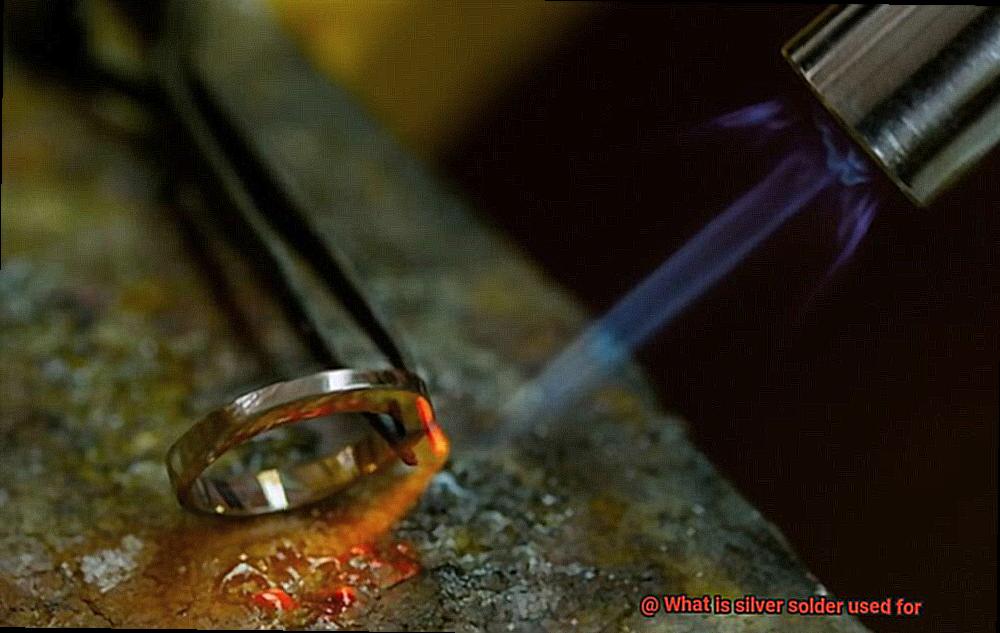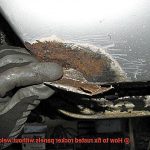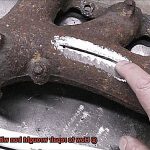Crafting beautiful and intricate pieces of jewelry or metalwork requires precision, attention to detail, and the right tools.
Among those tools is silver solder, the unsung hero of the crafting world. But what exactly is silver solder and why is it worth investing in?
Silver solder is a type of metal that combines silver with other metals like copper or brass. It has a lower melting point than pure silver, making it ideal for use in jewelry-making, plumbing, and electrical work.
Depending on the specific application, silver solder comes in different grades and flow temperatures. The primary purpose of silver solder is to join two pieces of metal together to create a strong and durable bond.
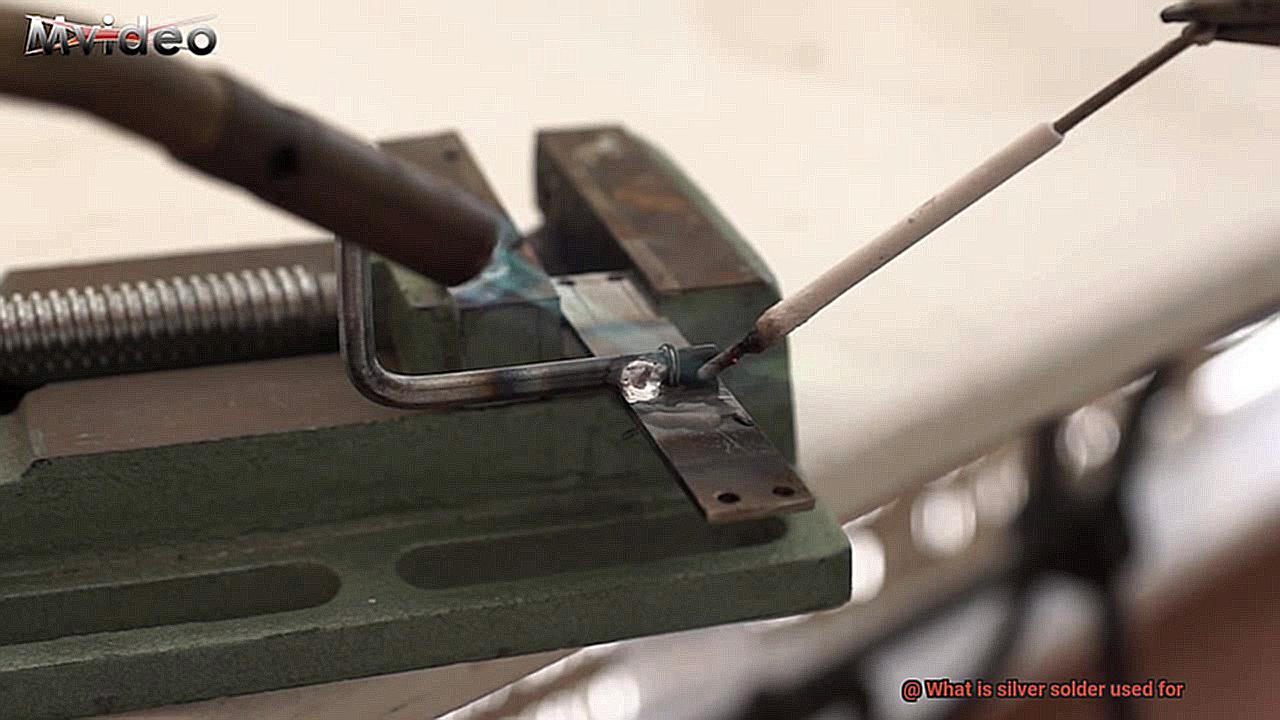
This makes it an essential material in jewelry-making as it allows for the creation of intricate designs by connecting different parts of the metalwork. But that’s not all.
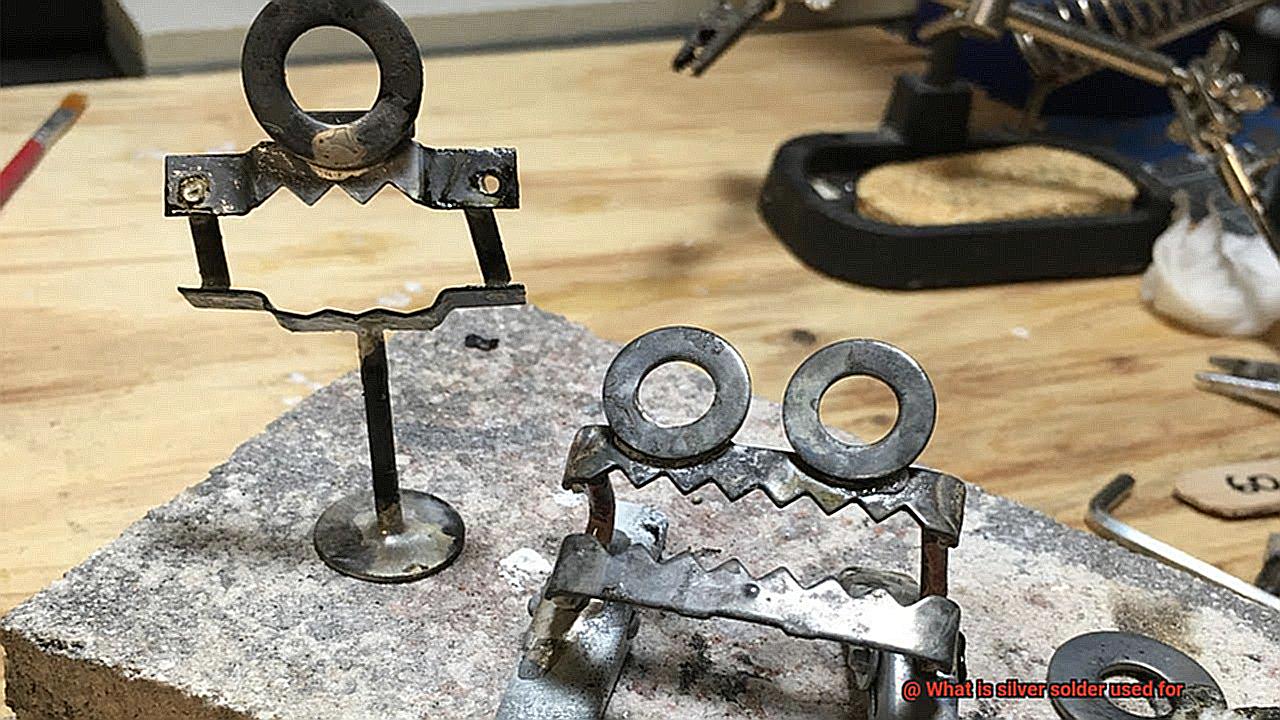
Silver solder also finds its use in plumbing and electrical work where a stronger bond is necessary. Its high melting point makes it ideal for use in situations involving high temperatures as well.
With proper technique and equipment, you can create stunning designs that stand the test of time using this essential tool.
The Main Uses of Silver Solder
Contents
When it comes to metal joining, silver solder is a top contender for its high silver content, which ranges from 15% to 80%.
This unique type of solder boasts excellent thermal conductivity and electrical conductivity, making it a go-to choice for professionals in the jewelry, plumbing, and electronics industries. In the jewelry industry, silver solder is prized for its ability to join precious metals like gold and silver.
Not only does it create a strong bond without discoloring the metal, but it can also be used to repair broken jewelry or reattach broken parts with precision and ease. The result is a seamless joint that looks as good as new.
Plumbers often turn to silver solder when joining copper pipes together. With its high melting point, this type of solder forms a leak-proof joint that can withstand high pressure and temperatures.
This makes it ideal for use in high-pressure plumbing systems where reliability is crucial. For the electronics industry, silver solder is a game-changer.
Its high thermal conductivity means it can dissipate heat quickly, preventing excess heat from damaging sensitive components. It’s also perfect for repairing damaged circuit boards or wiring with minimal effort and maximum efficiency.
Compared to regular solder, silver solder creates a stronger bond due to its higher melting point. Although it’s not as strong as welding, its strength and aesthetic qualities make it versatile enough for use in a variety of situations.
Its strength and electrical conductivity make it well-suited for use in the jewelry, plumbing, and electronics industries.
Advantages of Silver Solder Over Regular Solder
When it comes to metal joining, silver solder is the ultimate hero.
It’s no surprise that it’s the go-to choice for professionals in various industries, given the numerous advantages it offers over regular solder. One of the most significant advantages of silver solder is its strength.
It can withstand high temperatures and provide a stronger bond. This is because it has a higher melting point and contains a higher percentage of silver.
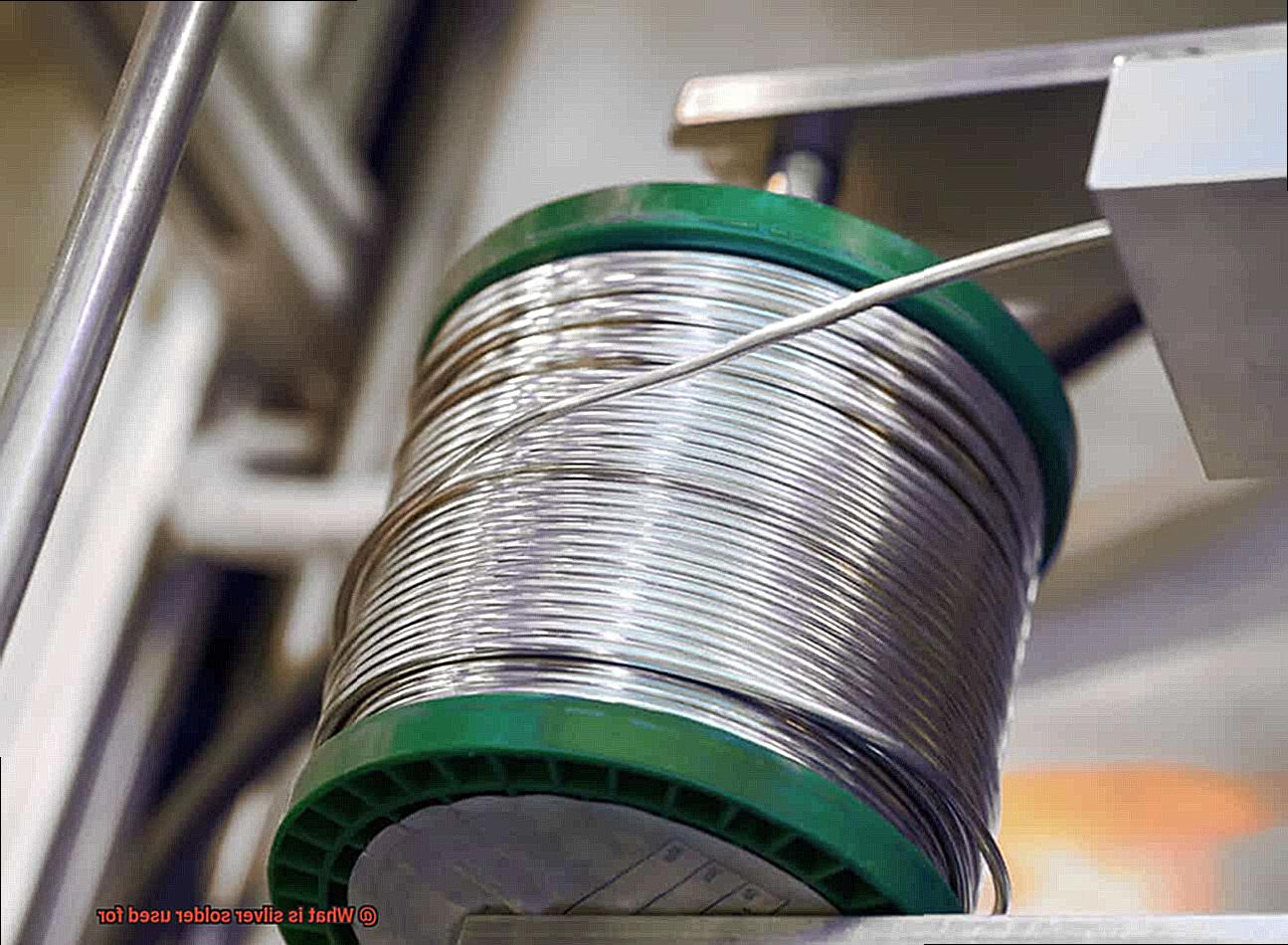
As a result, it can create seamless joints that last for years without needing repairs. But that’s not all.
Silver solder also creates a more durable joint than regular solder. Regular solder may crack or break over time, especially when exposed to stress or vibration.
Silver solder, on the other hand, is less prone to cracking or breaking, making it ideal for applications where durability is essential. Besides being incredibly strong and durable, silver solder creates a cleaner joint.
Regular solder can leave behind residue or flux, which can be challenging to remove and may even cause corrosion over time. Silver solder leaves behind a clean, shiny finish that is less likely to corrode or tarnish.
Perhaps one of the most remarkable advantages of silver solder is its versatility. It can join a wide range of materials, including steel, copper, brass, and even precious metals like gold and silver.
This makes it an ideal choice for jewelry makers and metalworkers who need to join different types of materials together. In summary, silver solder offers several significant advantages over regular solder.
Silver Soldering in the Jewelry Industry
As an expert in this field, I am thrilled to share with you the many benefits of using silver soldering in jewelry making. If you’re a jewelry designer, you know that creating intricate designs can be a challenge, especially when it comes to joining two separate pieces together.
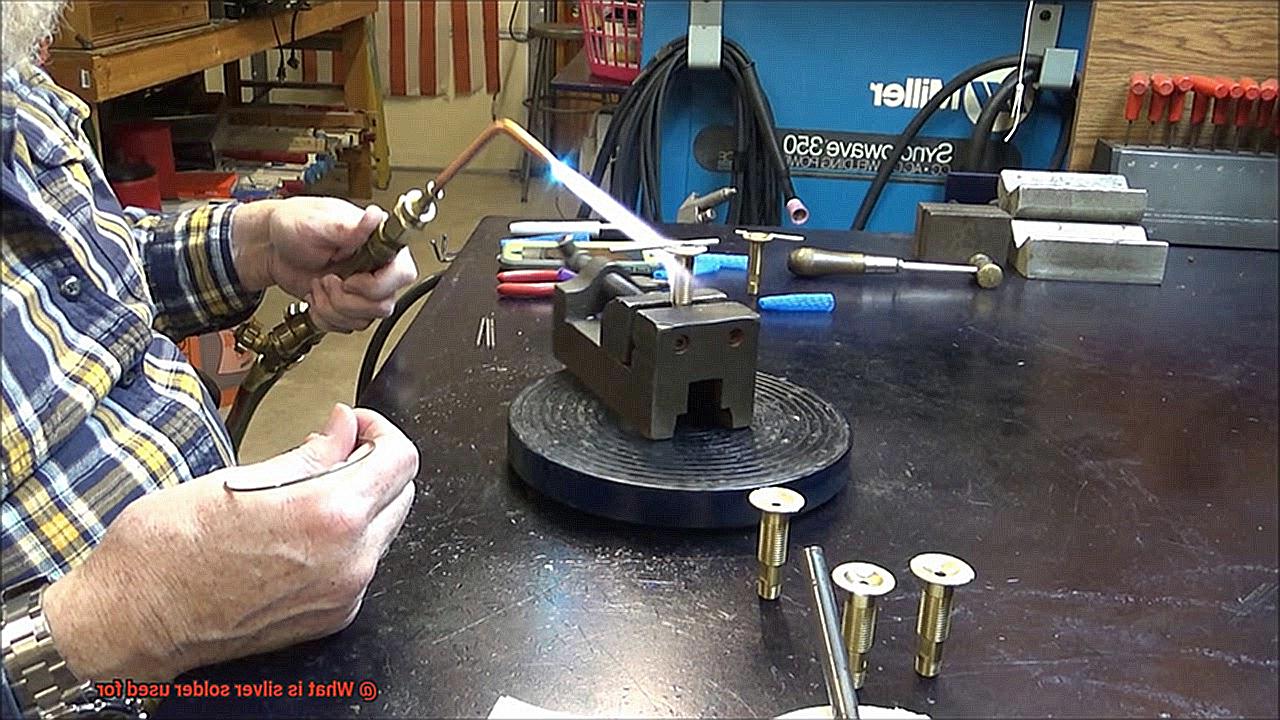
This is where silver soldering comes into play as a superhero technique. It allows for precise application, enabling jewelers to create even the most delicate designs without damaging the surrounding area.
Moreover, silver soldering creates a clean and professional-looking finish. The bond created by silver soldering is incredibly strong, resulting in an almost seamless joint between the two pieces of metal.
This bond is essential for jewelry designers who want their pieces to last for years without any cracks or corrosion. Another significant advantage of silver soldering in the jewelry industry is its versatility.
Jewelers can use it to join various types of metals, including gold, platinum, brass, and copper. This makes it an essential tool for jewelry designers who love to experiment with different materials and create new designs.
The actual process of silver soldering requires specific techniques and knowledge to achieve good results. Jewelers typically use a torch or a soldering iron to heat the metal and melt the silver solder.
The solder then flows into the joint between the two pieces of metal, creating a strong bond. In conclusion, silver soldering is a valuable technique in the jewelry industry that offers incredible benefits.
Joining Steel and Other Metals with Silver Solder
Joining steel and other metals can be a daunting task, but with the superhero technique of silver soldering, it’s a breeze.
Silver soldering is a popular choice among welders and metalworkers because it creates a strong, durable bond between different types of materials. The first step in silver soldering is to clean the surfaces that will be joined thoroughly.
This crucial step ensures that the bond between the two pieces is robust and long-lasting. Once the surfaces are clean, flux is applied to both parts, and they are heated with a torch until the flux starts to bubble and turn brown.
Next, the silver solder is applied to the joint and heated until it melts and flows into the joint. It’s essential to apply heat evenly to prevent warping or distortion of the metal.
Silver solder has a higher melting point than regular solder, making it an excellent choice for joining metals with high melting points, such as steel. One of the advantages of using silver solder is that it creates a strong, durable bond that can withstand high temperatures without compromising the strength of the joint.
Unlike regular solder, which is typically used for low-temperature applications, silver solder produces a more robust joint, which means your pieces will last longer. In jewelry making, silver soldering is commonly used to join precious metals like gold and silver.
A smaller torch and less heat are required in this case to prevent damage to delicate pieces. In conclusion, silver soldering is an excellent choice for joining steel and other metals due to its strength and durability.
Is Silver Solder Stronger Than Welding?
If you’re in the metalworking world, then you’ve probably heard of silver soldering and welding.
But which one is stronger? The answer is: it depends.
It all comes down to the specific application and materials being used. Let’s start with silver soldering, which is like a superhero technique that contains a higher percentage of silver than regular solder.
This makes it stronger than your average solder. It’s commonly used in jewelry making, plumbing, and electrical work.
The process involves heating the joint area with a torch until the solder melts and flows into the joint. The melted solder then cools and solidifies, creating a strong bond between the two pieces of metal.
This process involves melting two pieces of metal together to create a strong bond.
Welding is often used in construction, automotive repair, and manufacturing. The strength of a weld depends on several factors such as the type of metal being welded, the welding technique used, and the skill of the welder.
While welding is generally stronger than silver soldering, there are some benefits to using silver solder. Silver soldering is a lower-temperature process that’s perfect for delicate or intricate work where high heat could damage the surrounding materials.
Ultimately, whether you choose silver soldering or welding depends on your specific needs. In some cases, welding may be necessary for maximum strength, while in others, silver soldering may be sufficient.
Aesthetic Qualities of Silver Solder
When it comes to silver soldering, it’s not just about creating strong bonds between metal components.
Silver solder also boasts some impressive aesthetic qualities that make it a versatile material for use in various applications. As an expert in this field, let me take you on a journey to explore these aesthetic qualities and how they make silver solder an attractive choice for many industries.
Let’s start with its appearance.
Silver solder has a shiny, metallic appearance that blends seamlessly with silver jewelry, making it a popular choice for jewelry makers.
Its high melting point means that it can be used to create strong and durable bonds in jewelry pieces, ensuring longevity. This makes it perfect for creating intricate and delicate designs that require a solid foundation to hold them together.
In addition to its strength, silver solder’s malleability is another key aesthetic quality that sets it apart from other materials. Its ability to be shaped and formed into different shapes and sizes makes it ideal for creating unique and intricate designs, such as filigree work or other decorative elements in jewelry making.
Whether you’re creating a statement piece or a delicate charm, silver solder allows you to bring your creative vision to life. But the versatility of silver solder doesn’t stop there.
It’s also commonly used in the manufacturing of musical instruments, such as trumpets, saxophones, and flutes. Its ability to create strong and durable bonds ensures that these instruments will withstand the test of time, even through countless performances.
And let’s not forget about its applications in the kitchen appliance and automotive industries. Silver solder’s aesthetic qualities make it an attractive choice for products where appearance is important, such as high-end kitchen appliances or luxury cars.
The durability of silver solder ensures that these products will last a long time while still looking beautiful.
Overall, the aesthetic qualities of silver solder make it a superhero material that can be used in a wide range of applications.
Whether you’re a jeweler looking to create unique designs or a manufacturer producing high-quality products, silver solder offers both durability and attractiveness.
9-iTdC9v6iI” >
Conclusion
To sum up, silver solder is an indispensable material in many fields, such as jewelry-making, plumbing, electronics, and metalworking.
Its high silver content and lower melting point make it an ideal choice for bonding different types of metals to create robust and long-lasting connections. The most significant advantage of using silver solder over regular solder is its strength and durability.
It produces a seamless joint that can withstand years of wear and tear without requiring any repairs or maintenance. Furthermore, it leaves behind a lustrous finish that resists tarnishing and corrosion.
Silver soldering also offers several aesthetic qualities that make it an attractive option for various industries. Its metallic shine blends seamlessly with silver jewelry, making it perfect for creating intricate designs that require a sturdy foundation to hold them together.
Thanks to its malleability, silver solder can be shaped into unique designs, making it ideal for crafting decorative elements in jewelry-making or musical instrument manufacturing. Additionally, its applications in the kitchen appliance and automotive industries add a touch of luxury while ensuring durability.
Whether you’re a professional jeweler or metalworker looking to create stunning designs or a plumber seeking reliable metal joining solutions, silver soldering is the superhero technique you need.
